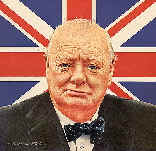Leadership Styles |
|
There are a number of ways of exploring leadership style. If leaders can successfully understand their natural style of leadership, and explore how that style might be changed to fit different circumstances and different people, then their leadership is much more effective. Knowing their strengths and abilities, and leaving other parts of their leadership to others is another vital element of being a great leader. For
example, British Prime Minister Winston Churchill during the Second World War knew that he
had a vital task in building the morale of the British people, and chose to step aside
from several important Cabinet discussions in order to spend time working on radio
speeches to the country at large. |
|
| Adopting different
leadership styles in different situations is not intrinsically manipulative. It should be
quite the reverse, allowing people the freedom to grow in confidence and adopt new
responsibilities for themselves. For instance, imagine teaching someone to drive.
Initially, the instructor will need to give precise, structured instructions. Later, as
the pupil grows in confidence all that may be required is to facilitate a review of
learning points after a drive. The situational leadership
model is based around adapting the leadership style to suit the situation. On this website we present an alternative view of leadership styles. This recognises that leadership is a process, from vision forming to implementation, involving the overcoming of barriers and the formation and leadership of teams. An individual leader may have a natural style most suited to one or two areas, or may be an all-rounder. Our free online leadership style inventory will help you discover more about your leadership style. As well as providing the resource on-line, you may download copies as pdf files in English, French, German, Russian, Spanish and Swahili. These may be freely copied for non commercial use, providing that copyright attribution is maintained. |
|

